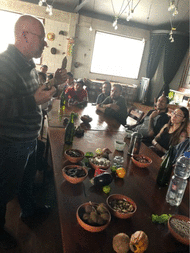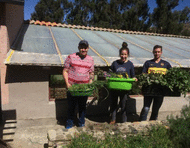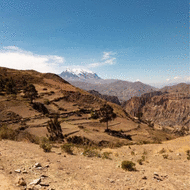Gastronomic ethnobotany
Humans depend on plants for food, use them for building materials and to make their daily tools; They also form an important part of their cultural and spiritual practices. 80% of the population in the developing world depends on plants for their primary health care. Indigenous groups use plants in a variety of ways in their daily lives. In many cultures, the traditional knowledge of how to use plants is passed from generation to generation mainly through oral means. Indigenous and local societies are increasingly confronted with changes that threaten the preservation of their traditional knowledge. It is estimated that most of the world's spoken languages will disappear in the next 50 years.
There are about 10,000 species of edible plants, but only about 100 species are among the plants consumed by the vast majority of the world, and fewer than 10 species provide more than 90% of the calories consumed worldwide. The wide variety of plants growing in the world has been little used for potential alternative crops and as a source of genetic resources that could help improve the food crops most commonly used today.
We work around the world to document culinary culture and local food systems, and to preserve and promote global food diversity. As part of our mission, we help bring ingredients from the field and farm to the tables of fine dining restaurants.
References:
Ahmad, L; Riaz, M; Ahmad Jan, H; Semotiuk, AJ; Ahmad, I; Khan, I; Ali, F; Rashid, W; Bussmann, RW (2021). An ethnobotanical survey of wild food plants used by the local communities of Kumrat Valley in District Upper Dir, Pakistan. Ethnobotany Research and Applications 22:20. 10.32859/era.22.20.1-13
Hassan, M; Haq, SM; Majeed, M; Umair, M, Sahito, HA; Shirani, M; Waheed, M; Aziz, R; Ahmad, R; Bussmann, RW; Alataway, A; Dewidar, AZ; El-Abedin, TKZ; Al-Yafrsi, M; Elansary, HO; Yessoufou, K. (2022). Traditional Food and Medicine: Ethno-Traditional Usage of Fish Fauna across the Valley of Kashmir: A Western Himalayan Region. Diversity 14(6):455. doi: 10.3390/d14060455
Shah, A; Badshah, L; Bussmann, RW; Muhammad, M; Abdullah; Ullah, F; Khan, S; Khan, N. Quantitative study of the food flavoring spice mixtures used in the traditional markets of District Bannu, Khyber Pakhtunkhwa, Pakistan. Ethnobotany Research and Applications 23:26. doi: 10.32859/era.26.20.1-33
Hassan,M; Yaqoob,.U; Haq,SM; Jan,.HA; Habib,.H; Hamid,.S; Lone, FA; Bussmann, RW (2021). Food and culture: Cultural patterns related to food by indigenous communities in Kashmir – A Western Himalayan region. Ethnobotany Research and Applications 22:44. doi: 10.32859/era.22.44.1-20
Pieroni, A; Sõukand, R; Bussmann, RW. (2021). The inextricable link between food and linguistic diversity: Wild food plants among diverse minorities in NE Georgia, Caucasus. Economic Botany. 74:379-397. doi: 10.1007/s12231-020-09510-3
Selected Publications
- Eslami‑Farouji, A; Haerinasab, M; Bussmann, RW; Malca Garcia, GR. (2025):
- Ethnobotanical and pharmacological uses, along with phytochemical aspects, of Trifolium pratense and T. repens (Fabaceae): global and local perspectives in Iran.. Genetic Resources and Crop Evolution : doi: 10.1007/s10722-025-02556-z
- Rajapaksha R, Pham VT, Ojha R, Islam T, De Silva N, Pushpakumara G, Bussmann RW. (2023):
- Ethnobotany of Lasia spinosa (L.) Thwaites: the spiny edible aroid in Asia. Genetic Resources and Crop Evolution : doi: 10.1007/s10722-023-01574-z

Dr. rer. nat. Rainer W. Bussmann, Dipl. Biol.
Phone: +49(0)721 175 2848
E-Mail: rainer.bussmann[at]smnk.de








